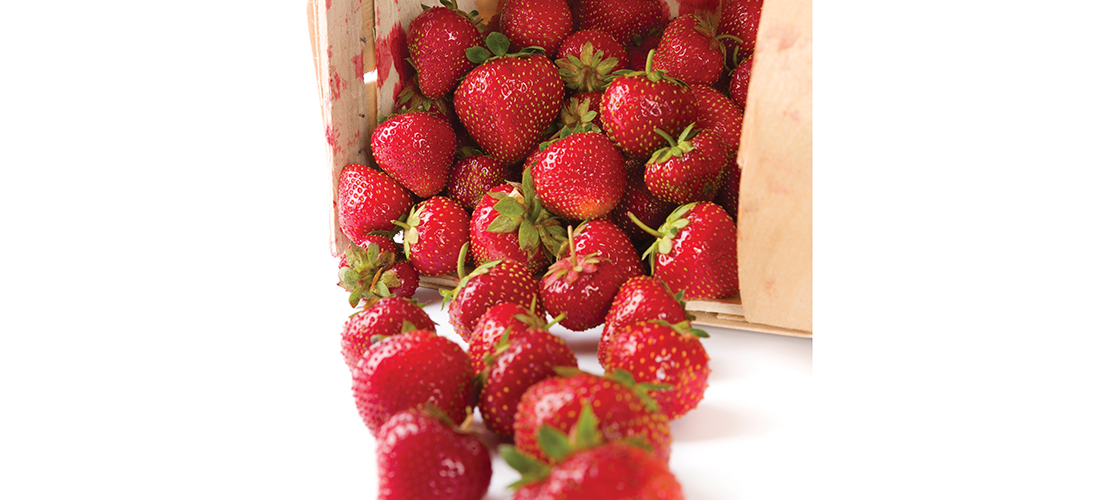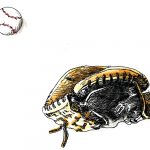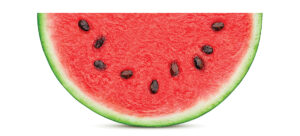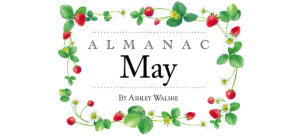
Bearing Fruit
When Sandhills strawberries rule
By Jan Leitschuh
With apologies to John Lennon, in the Sandhills, strawberry fields are not forever.
So, COVID-sluggish berry lovers will need to shake up their socially-isolated calendars and get a move on to catch this seasonal Sandhills delight. At the beginning of May, the local berries are hitting their stride; by Mother’s Day, they will have hit their peak. Thereafter, the volume will tail off rapidly. Get moving!
You didn’t plant your own strawberries last October, did you? Luckily, local growers did, and their efforts are now bearing fruit. Literally. Producers usually have enough volume to open sometime in April (usually mid-April). As the weather warms, the berries begin to ripen in large, rapid waves. Lovers of strawberries cherish this brief, abundant window of juicy berry sweetness and load up.
Local strawberries? What’s the big deal? Aren’t there strawberries in the supermarkets nearly year-round?
Indeed there are, and a nice thing that is, too. These ruby-colored fruits brighten up yogurts, cereals, salads and garnish cheese plates all year.
But we’ve all bitten into a large, robust store strawberry, mouth a’watering, and felt . . . bleh. Disappointment. Where was the tender sweetness? Where was the melting, fragrant juice? The taste did not live up to its visual promise.
While a colorful, store-bought strawberry is certainly better than a poke in the eye with a sharp stick, that berry can’t hold its own against the vibrant, local product. Why? Because most store berries are bred to be shipped long distances, rather than for taste, sweetness and tender juiciness.
The Sandhills berry, however, is harvested and distributed locally — a touchy business, given the fragile, sweet tenderness of the locally preferred varieties like Chandler, Camerosa and Sweet Charlie. Sandhills berries are hand-picked at the peak of ripeness, rather than early to be shipped, and its sugars have longer to develop. This ready-ripeness means you have to eat or process them right away. Given their tender juiciness, Sandhills berries are not going to hang around for weeks like a half-ripe, store-bought strawberry.
Few things are more sensual during the lusty month of May than a fresh Sandhills strawberry, eaten at room temperature (preferably with a splash of cream, whipped or otherwise). In Roman times, it was the fruit associated with the goddess Venus. Ancient Romans often made offerings of the fruit at her temples. Food of the goddess. Shouldn’t some grace your springtime table?
Strawberries and cream is a traditional Wimbledon snack. More than 55,000 pounds — over 25 tons — of strawberries are consumed every year during the championships.
Local farmers markets and farm stands should have buckets of ripe strawberries as the month opens. (Again, don’t tarry. The glorious flush comes, peaks and flies past in a flash!) Local You-Pick farms are great fun if a jaunt to the country with the kids appeals — just know that in 2021, the You-Pick status, as they say on Facebook, is “complicated.”
Last year producers did the picking and sold through car windows, lines of autos snaking through the farm roads as eager-but-cautious customers lined up and paid tribute to the Sandhills strawberry during peak times. This year may be a combo of the above, plus some greater openness later in the season. Plans remain fluid.
Popular Highlander Farms on N.C. 22, for example, is currently planning on doing drive-up, said producer John Blue, as well as walk-up. This plan will be re-evaluated as needed. “We are not planning to open the You-Pick right now,” he says, “but we will see as the season progresses.”
Best bet is to contact your favorite fruit stand for info. Many of the local stands and markets have Facebook pages and phone numbers.
Besides the deliciousness and fragrance, strawberries are the exotic superfood you’ve been consuming your entire life. The delicious fruits are chock-full of useful, health-promoting compounds like folic acid, vitamin C, fiber, anthocyanins and quercetin. The medical conclusion is that the well-studied strawberry supports cardiovascular and metabolic health, and the abundant flavonoids may help reduce hypertension and general inflammatory markers.
Strawberries actually have half the sugar as the same volume of blueberries. Part of their sweet sleight of hand magic has to do with that heady, nose-filling fragrance. Strawberries are fairly acidic, however, so brush your teeth after to avoid gum irritation and tooth sensitivity.
Don’t wash your Sandhills strawberries until you are ready to eat or process them. Any wetness will rapidly promote mold. Best to store them in the fridge crisper for a day or two at most. In other words, plan ahead before bringing them home.
Once you have your plan in mind, rinse and hull berries. Hulling means nipping out the green stem bit at the top.
Now what? My weakness is a strawberry pavlova, an elegant confection on a light meringue base. Whipped cream is piped into a “nest,” then sweetened berries are spooned into the middle. A dollop of cream and a berry on top crowns this fabulous, fattening dessert. It has it all — sweet creaminess, crispy-chewy meringue and, of course, glorious, fresh berries at their peak.
Classic strawberry shortcake is a close second, however. Biscuits, cream and berries — how can you go wrong? Unless, of course, you prefer strawberries and lemon pound cake.
Strawberry preserves are easy enough to do. There are many YouTube videos that can walk you through the process. Freezer jam is even simpler. No canning knowledge needed. (Recipe below or use the recipe on the Sure-Jell pack.)
Easiest is probably maceration. Combine hulled, sliced strawberries with sugar in a large glass or ceramic bowl and toss to combine. Set aside to “macerate” — basically stew in their own sweet, red juices. Cover bowl with plastic wrap and place in fridge. Eat with a spoon, ladle over yogurt and desserts or combine with cooked rhubarb.
Roasting strawberries is an unusual way to use up large quantities, and yields a rich, jammy, deeply flavored sauce. The heat of the oven concentrates the fruit’s natural sugars, so no additional sugar is needed. Rinse, hull and halve or quarter your berries. Arrange in a single layer on a parchment-lined baking sheet and roast at 350 degrees Fahrenheit for about 20 minutes. Spoon into a container while still warm, or the thickened, roasted juices can set up on the pan.
Bruised berries? Rinse them and toss them in daiquiris or smoothies, or puree and freeze. Ice cube trays make a nice unit of “berry” when a cube or two might be needed for a spring salad dressing, or to smarten up a fruit drink. Strawberry ices and “popsicles” are a healthy dessert alternative.
To symbolize perfection and righteousness, medieval stone masons carved strawberry designs on altars and around the tops of pillars in churches and cathedrals. The least we can do is place a righteous bowl of local perfection on our tables this month.
Easy Strawberry Freezer Jam “Springtime in a Jar”
4 cups granulated white sugar
1 quart fresh strawberries (see exact measurement below)
3 ounces (one pouch) liquid fruit pectin (Certo is readily available at most larger supermarkets)
2 tablespoons fresh lemon juice
(Yes, this is a lot of sugar, but necessary for the jam to “set” — use less if you don’t mind a more syrup-like creation or search out sugar-free type pectins at your store.)
Stem and crush strawberries with a potato masher. Don’t try to use a blender or food processor for this step as you want some small pieces of strawberry to remain. Measure exactly 2 cups prepared fruit into a large microwave-safe bowl. Add the 4 cups of sugar and stir well for 1 minute. Microwave bowl on high power for 3 minutes. (Mixture will not cook but will become warm enough for sugar to dissolve.) Remove and stir well for another minute, to avoid graininess.
Allow strawberry mixture to sit for 2 hours, giving it a good stir about every 30 minutes. Take a taste to make sure the sugar is dissolved. If it still has a bit of a grainy texture, stir for another minute or two until sugar is well-dissolved. (When the sugar is well-dissolved, the mixture will actually deepen in color and lose its “cloudiness.”)
Combine the liquid pectin and lemon juice in a small bowl. Add to strawberry mixture and stir 3 minutes. Fill containers to within 1/2 inch of top — mixture will expand a bit in the freezer. Let stand at room temperature 24 hours. Refrigerate up to 3 weeks or freeze up to 1 year. Thaw in refrigerator.
— From The Café Sucre Farine. PS
Jan Leitschuh is a local gardener, avid eater of fresh produce and co-founder of Sandhills Farm to Table.





